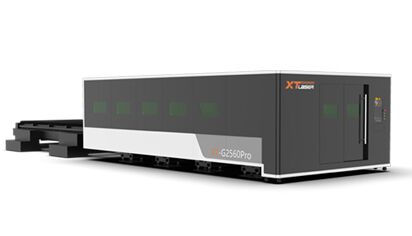What is a laser cutter used for? -Amber
What is a laser cutter used for?
There are many materials that can be cut by a laser cutter: from wood to plastic, from steel to ceramic.
Let’s have a look for the wide range of laser cutting applications:
Aeronautic and Aerospace Aeronautic and laser cutting technology have always been closely linked. Remember, Boeing was among the first companies to use laser cutting technology for its engines in the 1970’s.
Aviation and space travel place indeed the highest demands on materials and technology: modern engines need to achieve an ever higher performance while, at the same time, reducing fuel consumption. Utilizing materials with improve strength and reduce density is by far the most efficient way to achieve this goal, and laser material processing has been proved suitable for these ambitions.
In aeronautic and aerospace, the powers of the lasers are in the order of few hundreds of watts to few thousands of watts. They are employ for the cutting and fusion welding of alloy and superalloy sheets, turbine engine deep hole drilling, repair of blades for gas turbines aircraft engines, on-the-fly drilling of de-icing panels and heat treatment of surfaces. Thanks to these techniques, the engines can operate efficiently at high temperatures.
Aeronautic and aerospace now even use ultrafast laser cutters. There are two types of ultrafast lasers: picoseconds (1×10-12 second) and femtosecond (1×10-12 second). Their extreme short pulse duration provides peak power reaching giga watts, enabling almost all kinds of materials to break down instantaneously under laser irradiation.
Tips:
• Improves the strength of the material but reduces its density.
• The processing is highly versatile: by tuning laser parameters, multiple tasks can achieve such as cutting, drilling, welding and cladding with a single machine.
Photovoltaic Panels
The making of photovoltaic panels requires several thin layers of conductive and photoactive materials. These layers are then structure, drille and cable together.
Lasers are use for edge deletion on thin film solar cells. To protect thin film solar modules from corrosion and long-term short circuits, the layering system at the edge of the module is removed and laminated. In the 2000’s, the entire solar industry converted to lasers in order to remove this few millimeters fraction of semiconductor material from the edges of the silicon wafer, which would otherwise lead to undesired short-circuiting around the edges.
During this process, the laser beam works at a speed of more than 700 mm per second, with a very low risk of short-circuiting. It is much more reliable than any other techniques on the market so far, better than sand blasting for example. A second operation successfully accomplished by lasers when building solar panels is drilling solar cells. The laser works contactless and can get into position very quickly, without producing any mechanical charge. Thousands of holes can be drilled in a second.
Tips:
1. Creates extremely small and precise solar cells.
2.Inexpensive.
3.Very few time consuming.
4.Easy to integrate in the production line.
5. Contactless, precise and process-safe.
6.There is a very low risk of short-circuiting.
7.Much more reliable than any other techniques on the market so far.

Fashion
Laser cutter used to be reserved for haute couture designs, but the technology is now more readily available to manufacturers. It is now more common to see laser-cut silk and leather in ready-to-wear runway collections or at retailers such as Topshop or ASOS.
In general, laser-cutting works best on synthetic fabrics; the plastics in these textiles melt during the process, resulting in a sealed, perfect edge that will not fray. Natural fabrics on the other hand, are slightly spoiled by the heat of the laser, holding the fibers in place. This generally results in a discoloration at the edge of the cut, even if adjustments can made depending on the fabric and the strength of the laser to potentially eliminate any marks.
Laser works also really well on leather. For example, the French saddler and designer Hermès has acquired several lasers in its workshops, and uses them to cut pieces in leather skin. The craftsmen can now cut four to five bags in one skin thanks to this precise technology, without losing as much of their precious and expensive material as they did when cutting with blades.
Tips:
*High Accuracy.
* Clean laser cuts.
* Sealed fabric edges to prevent fraying.
1. A unique machine can cut many different materials: silk, nylon, leather, neoprene, polyester, cotton…
2. Laser cuts made without any pressure on the fabric, no part of the cutting process requires anything else to touch the garment.
3.No unintended marks left on the fabric, which is particularly beneficial for delicate fabrics like silk and lace.
Robots, Drones and Electronic Fabrications
Laser cutter offers an efficient cutting solution for almost every material in the electronic industry. For example, concerning MicroSD cards, laser cutting is three times more cost effective at comparable performance than water jet cutting.
Same goes for laser-cutting of circuit boards. When making cellphones and smartphones, laser-cutting is a powerful tool in every aspects of the conception. Lasers cut plastic boxes, drill the holes of the keyboard, for the different plugs, engrave the brand… The laser is even use to melt a plastic patch to protect the screen. Drones and robots often require the use of laser-cutting as well, for the electronic components as for the pieces of the device.
Tips:
1. Beam deflection with scanning heads allows any complex contours that can reprogramm to be cut in a short time.
2.As opposed to other cutting processes, the laser cannot wear out, which assures the continuous processing quality.
3.Sealed and neat edges.



